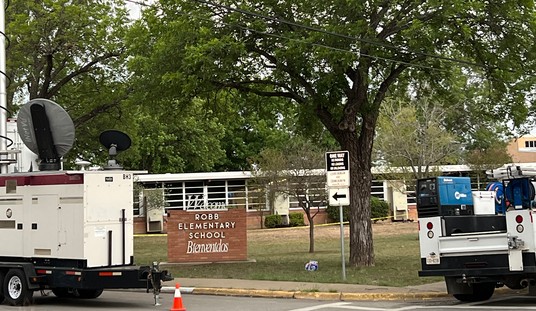Simply keen-eyed observation, or something more sinister? The Boston Globe reports that the federal air marshal service has spent the last several years doing more than just providing plainclothes in-flight security. Under a program called “Quiet Skies,” air marshals have been tracking suspicious behavior and conducting surveillance of travelers, even without any evidence of criminal behavior:
Federal air marshals have begun following ordinary US citizens not suspected of a crime or on any terrorist watch list and collecting extensive information about their movements and behavior under a new domestic surveillance program that is drawing criticism from within the agency.
The previously undisclosed program, called “Quiet Skies,” specifically targets travelers who “are not under investigation by any agency and are not in the Terrorist Screening Data Base,” according to a Transportation Security Administration bulletin in March. …
But some air marshals, in interviews and internal communications shared with the Globe, say the program has them tasked with shadowing travelers who appear to pose no real threat — a businesswoman who happened to have traveled through a Mideast hot spot, in one case; a Southwest Airlines flight attendant, in another; a fellow federal law enforcement officer, in a third. It is a time-consuming and costly assignment, they say, which saps their ability to do more vital law enforcement work.
CBS This Morning and other network affiliates picked up the story this morning as well. However, they note that TSA is responding to a mandate from Congress to watch for suspicious activity in air travel, and that they’ve been in the loop for more than a year, at least:
Officials familiar with the program said “Quiet Skies” complies with security constraints and privacy requirements. One source said the “Quiet Skies” team has to be prepared to justify why an individual is being questioned if they are challenged.
If a flyer is on the list for a certain amount of time and travels without incident, they are automatically removed from the list. Some in the security field believe this creates a certain level of risk because if the person being surveilled is a sleeper agent, they may succeed in flying under the radar. But congressional concerns about redress prompted the policy.
The “Quiet Skies” program has been in existence since 2010 and the TSA says Congress and the airlines have been briefed on the program over the last 12 to 18 months.
Just how much of this is simple observational law enforcement? At least a substantial part of it, and it has echoes of demands from Congress for TSA to take a more pro-active approach to air-travel security. For years, Congress has urged TSA to take lessons from Israel’s behavior-based screening approach rather than the random-selection process used at security checkpoints in airports. As I wrote in 2010, coincidentally about the time “Quiet Skies” launched, doing so would require a significant shift in strategy:
Recreating the Israeli model requires staff trained to look for the right indicators. Hiring 3,000 agents without providing them enough training to be effective is just a waste of money and time. There have been 24 misses of known terrorists at SPOT airports, including a failure to stop Times Square bomber Faisal Shahzad from boarding a flight to Dubai. The FBI got him off the plane when they discovered his presence on it through other means.
It appears that TSA did start training on those indicators, and structured Quiet Skies to follow up on them:
Already under Quiet Skies, thousands of unsuspecting Americans have been subjected to targeted airport and inflight surveillance, carried out by small teams of armed, undercover air marshals, government documents show. The teams document whether passengers fidget, use a computer, have a “jump” in their Adam’s apple or a “cold penetrating stare,” among other behaviors, according to the records.
Air marshals note these observations — minute-by-minute — in two separate reports and send this information back to the TSA.
If they send up enough yellow flags, then air marshals start following them on their travels until they’re satisfied that no threat exists:
But during in-flight observation of people who are tagged as Quiet Skies passengers, marshals use an agency checklist to record passenger behavior: Did he or she sleep during the flight? Did he or she use a cellphone? Look around erratically?
“The program analyzes information on a passenger’s travel patterns while taking the whole picture into account,” Gregory said, adding “an additional line of defense to aviation security.”
“If that person does all that stuff, and the airplane lands safely and they move on, the behavior will be noted, but they will not be approached or apprehended,” Gregory said.
The surveillance might be creepy — well, it is creepy — but it doesn’t appear to cross any constitutional lines. Law enforcement is allowed to observe public behavior in almost any context, and there is a heightened state interest in protecting air travel. It makes more sense to develop a profile of behavior than an ethnic or political profile for increased observation, especially under American laws.
The better question may be whether it’s a good use of resources. But that can also be applied to the security theater already on display at airports, where TSA agents randomly select people for heightened screening rather than apply more specific criteria for that selection. Rather than get rid of behavior profiling, perhaps the better solution is to ensure that it gets properly refined so as to ensure that resources get applied more effectively.







Join the conversation as a VIP Member